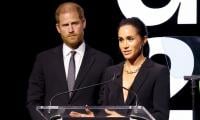Another interesting piece of writing about animal-human interaction, I found in the ‘Rasail-e-Ikhwanus Safa’ (Epistles of the Brethren of Purity). In tenth-century Basra, there was a group of Muslim philosophers who wrote encyclopaedic entries on questions of both physical and metaphysical importance. The best-known of their 50 or so works, ‘the Case of the Animals versus Man before the King of the Jinn’, is a critique of human attitudes towards animals.
Among the various books I have about ‘Ikhwan us Safa’, the ones by Muhammad Kazim titled ‘Ikhwan us Safa aur doosrey mazameen’ (Ikhwan us Safa and other essays) and Javed Akhtar Bhatti’s compilation of articles and translations are the best.
Bhatti’s book is titled Ikhwanus Safa – Tarikh, Nazaryat, Aqaied (The Brethren of Purity–their history, ideology, and beliefs) first published by in 2005. It includes Molvi Akram Ali’s translation that was originally done in 1810 at Fort William College and later edited and improved by Moulvi Abdul Haq. This amazing piece of writing is over a thousand years old but still gives an interesting reading. In this unusual narrative, representatives from the animal kingdom bring a court case against the human race whom they accuse of abusing their superior position.
According to the animals’ petition, before the creation of man they roamed the earth in peace and harmony, but then humans came and did nothing but exploited and destroyed with a complete lack of any sense of justice. The trial proceeds and the humans present their own arguments claiming their uniqueness and superiority, but their subjective assessments are demolished by counter-examples provided by the animals. Then the humans start the character assassination of animals, who offer ample evidence of their special qualities and merits. Interestingly, we find the animals presenting rational arguments against the humans’ arrogant claims.
It was a pleasant surprise to see Shihabuddin Suhrawardy’s ‘Lughat-i-Moran’ (the language of termites) translated into Urdu by Baseera Ambreen of the Oriental College Lahore and published by the 91st issue of literary journal ‘Sawera’. This interesting piece of writing was available in Persian and perhaps no Urdu translation was done earlier. Baseera has rendered it in chaste and easy-to-understand Urdu as ‘Chionteon ki Zuban’. About ants Hafeez Jalandhari also wrote a booklet titled ‘Chionti Nama’ but his booklet is very different from Suhrawardy’s which is a collection of parables with animals in them.
From the Subcontinent, the first that comes to mind is ‘Panchatantra’ (Five treatises) originally written in Sanskrit and later translated into Persian and then into Arabic by Ibn al-Muqaffa as ‘Kalila and Dimna’, the names of the two jackals in it. An Urdu version that I have in my collection was translated by Intizar Hussain and published in 1980. It is a collection of fables full of wisdom and advice but not at all normative or prescriptive. It unfolds one story from another and moves on from one sequence to another seamlessly. One more Urdu translation of ‘Kalila and Dimna’ I have is by Moinuddin Dardai titled ‘Anwar-e-Suhaili’.
Two offshoots from the ‘Panchatantra’ dealing with animal-human interaction are ‘Sukasaptati’ (Seventy tales of the parrot) and ‘Hitopadesha’ (Beneficial Advice). The famous ‘Tuti Nama: the Book of the Parrot’ by Zia Naqshabi of the 14th century is a Persian recreation of ‘Sukasaptati’ in which a mynah and a parrot try to dissuade their master’s wife from committing adultery. The parrot tells one tale a night – much in the same fashion as ‘Alf Laila wa Laila’ (A Thousand and One Nights) – till the master comes back. Naqshabi tried to Islamise the tales by including religious elements and increasing the number of tales to 83, some from the original Sanskrit and some from Persian chronicles.
The English version of ‘Hitopadesha’ that I have was edited and translated by G L Chandiramani. This offspring of ‘Panchatantra’ was written by Sri Narayana Pandit around 1675 AD. Every fable has a moral or philosophical theme that can be applied to human traits such as love, hate, envy, and jealously. The book tries to give us an insight into animal and human natures and teaches us how to choose friends on the basis of their reliability and trustworthiness. The ultimate message is of peace and harmony among all living creatures.
During one of my visits to India, I chanced upon an interesting 150-page book in Urdu with a beautiful pigeon on it, titled ‘Rangeela Parinda’ written by Dhan Gopal Mukerji and translated into Urdu by Shabab Lalit. The Urdu translation did not mention the original title of the English book, which I later found out to be ‘Gay-Neck: the Story of a Pigeon’, originally published in 1927 in the US. I had never heard of Dhan Gopal Mukerji before reading this highly absorbing book. It was enlightening to know that he was the first Indian writer of English fiction.
I had considered Mulk Raj Anand – whose English novel ‘Untouchable’ was published in 1935 – or R K Narayan of ‘Malgudy Days ‘as the Indian pioneers of English literature. It dawned on me that Mukerji had started writing at least 20 years earlier than Anand or Narayan. Perhaps he was the first Indian English writer who wrote about animals. This is, of course, not counting Rudyard Kipling whose ‘Jungle Book’ appeared in 1895 – but then, Kipling could hardly be called an Indian. ‘Gay-Neck, the Story of a Pigeon’ was published in 1927 and it won Newbery Medal in 1928.
It deals with the life of Gay-Neck – or Rangeela Parinda, as I have it. The book is based on the writer’s personal experiences with pigeons near the Himalayan Range. As a teenager, he breeds and trains pigeons and Rangeela Parinda is his favourite. The story is so full of information and knowledge about that era when pigeons were also used during WW1 as messengers. His pigeon is also brought to Europe where it rendered invaluable service during the war alongside Indian soldiers.
About fish and their resilience you must read ‘Moby Dick’ (1851) by Herman Melville and ‘The Old Man and the Sea’ (1952) by Ernest Hemingway. If you are interested in horses, I recommend Anton Chekhov’s short story ‘Misery’. A poor sledge-driver is waiting for passengers in the bitter Russian cold. His mare is shivering but when passengers come, she pulls the sledge anyway. The driver is extremely sad and dejected as his son had died a couple of days ago and he has been unable to share his sorrow with anyone. The passengers make fun of the driver when he tries to narrate his plight.
Finally, it is his mare that comes to his solace; while he feeds her at night she looks at him, licks his hands, sniffs him closely, and he cries his heart out to her. About horses three more must-reads are ‘Black Beauty’ (1877) by Anna Sewell, ‘The Red Pony’ (1937) by John Steinbeck, and ‘The Black Stallion’ (1941) by Walter Farley. I must also mention an unforgettable passage about cruelty to animals from Dostoyevsky’s ‘Crime and Punishment’ in which the protagonist, Raskolnikov, has a dream about a horse being bludgeoned and beaten to death. If you read that passage at night, you won’t be able to sleep.
Some of the other novels and stories that I have found very interesting about animal-human interactions are, ‘The Call of the Wild’ (1903) and ‘White Fang’ (1906) by Jack London, ‘Metamorphosis’ (1915) and ‘Investigations of a Dog’ (1922) by Franz Kafka, ‘The Birds’ (1952) by Daphne du Maurier, ‘My Family and other Animals’ (1956) by Gerald Durrell, and Murakami’s ‘The Elephant Vanishes’ translated into Urdu as ‘Haathi ki Gumshudgi’ by Saeed Naqvi and published in the 86th issue of ‘Aa’j compiled by Ajmal Kamal. The next part of this essay will exclusively deal with Urdu literature.
Concluded
The writer holds a PhD from the University of Birmingham, UK and works in Islamabad.
Email: mnazir1964@yahoo.co.uk















